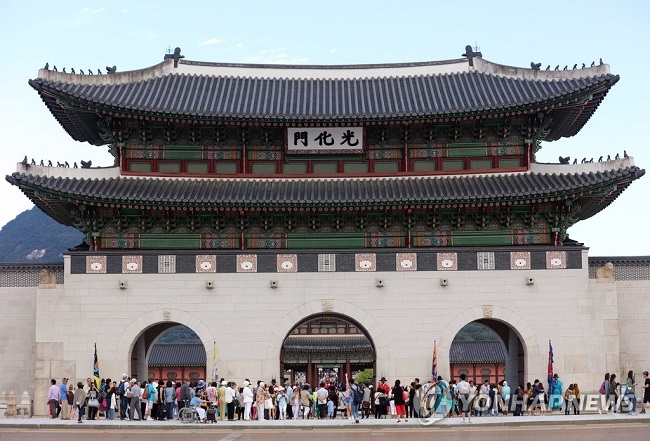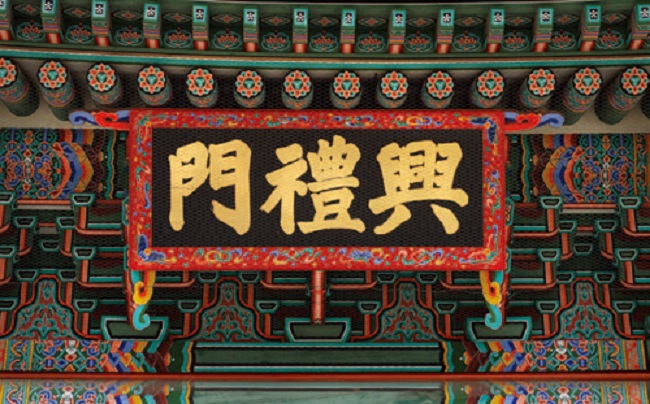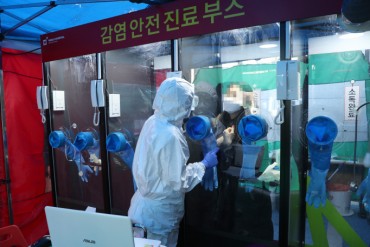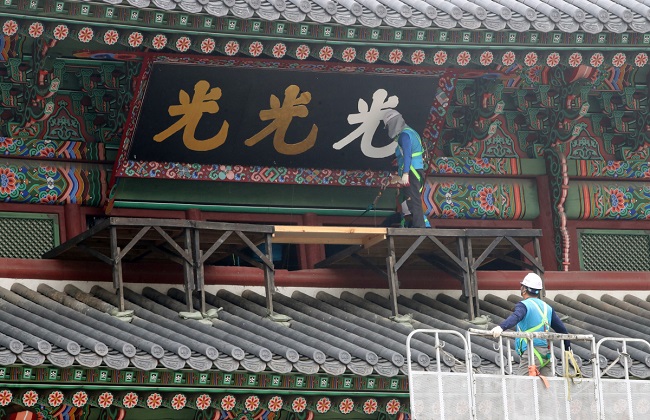
The Cultural Heritage Administration confirmed on January 30 the planned change to Gwanghwamun’s signboard is in accordance with the original first manufactured in the 1860s when the palace was reconstructed. (Image: Yonhap)
SEOUL, Jan. 30 (Korea Bizwire) — The signboard atop the largest gate leading to Gyeongbokgung Palace, the royal seat during the Joseon Dynasty, will be retouched with a black background and gold-colored lettering from its current white background with black letters.
The Cultural Heritage Administration confirmed on January 30 the planned change to Gwanghwamun’s signboard is in accordance with the original first manufactured in the 1860s when the palace was reconstructed.
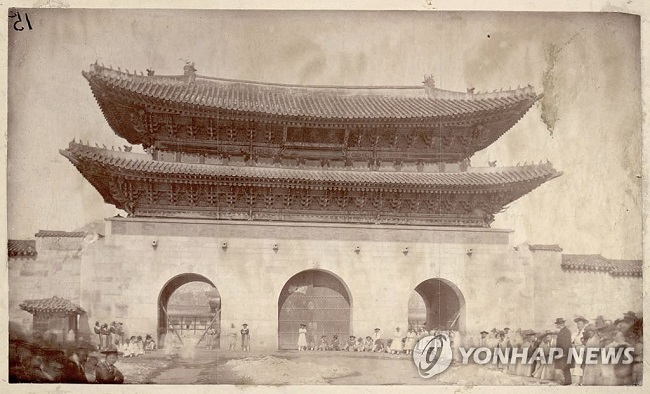
However, after a photograph believed to have been taken sometime before 1893 was brought forth from the archives at the Smithsonian in February 2016, questions over the signboard’s colors arose once again. (Image: Yonhap)
Once the correction to Gwanghwamun is complete, the three signboards belonging to Gwanghwamun, Heungrye and Geungjeong gates that mark the central pathway into the palace will be painted in the same colors.
Gwanghwamun’s signboard has been a subject of minor dispute ever since it was restored in 2010. The Cultural Heritage Administration previously denied allegations that the colors (black with white lettering) were incorrect, pointing to photographs of the gate taken in 1902 and 1916 held at the University of Tokyo and the National Museum of Korea as evidence.
However, after a photograph believed to have been taken sometime before 1893 was brought forth from the archives at the Smithsonian in February 2016, questions over the signboard’s colors arose once again.
The signboard in the grainy photo shows the background color to be considerably darker than the letters, leaving viewers to speculate whether gold or white were the likely hues of the Chinese characters written.
Faced with the fresh new evidence, the Cultural Heritage Administration conducted an extensive hands-on investigation and ultimately reversed its former position on the signboard’s black and white layout.
The new-look signboard is slated to go up in the early half of next year.
Kevin Lee (kevinlee@koreabizwire.com)


